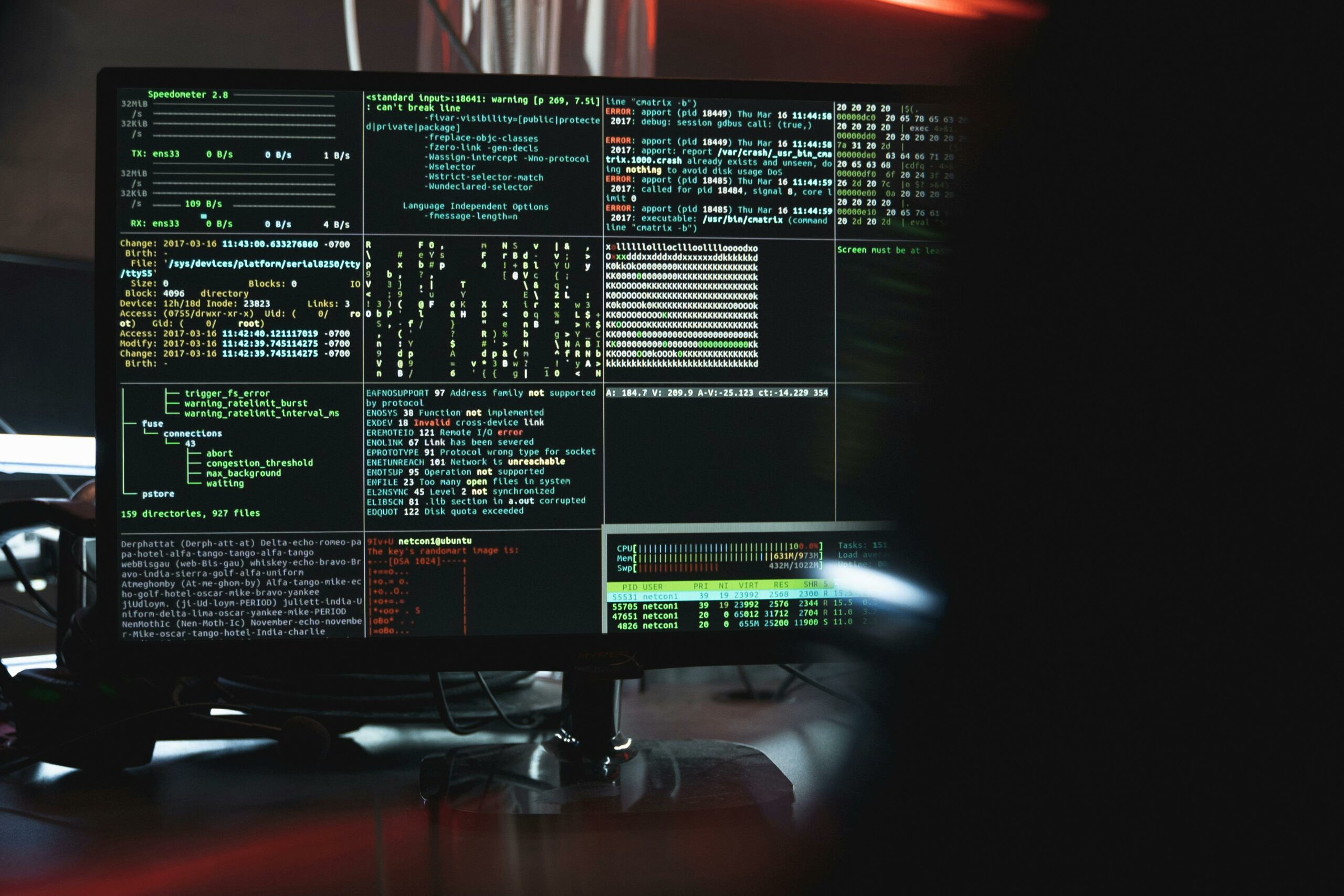7 Easy Tips to Battle Cybersecurity in K-12 School Districts
Schools have a wealth of data. From personal records, health information, financials data and academic records, K-12 school districts manage a lot of information. Because of this, K-12 school districts without proper cybersecurity are at high risk for cybercrime.
And worse yet is that many K-12 schools do not have the resources or expertise to manage proper cybersecurity. These school districts, even small ones of 100-300 students, are at a major risk.
From malware to ransomware, malicious insiders to hackers, it’s important that school districts take the necessary measures to ensure cyber safety. By implementing proactive cybersecurity strategies and leveraging advanced solutions like those offered by K12itc, schools can mitigate risks and secure their data.
Below are 7 tips from the National Cyber Security Alliance to help students and staff stay safe online.
- Implement and Use Endpoint Detection and Response (EDR)
EDR focuses on collecting data from the endpoint and examining that data for malicious or anomalous patterns in real time. As the name implies, the idea of an EDR system is to detect an infection and initiate a response. The faster an EDR can do this without human intervention, the more effective it will be.
A good EDR will also include capabilities to block malicious files, but importantly EDRs recognize that not all modern attacks are file-based. Moreover, proactive EDRs offer security teams critical features not found in Antivirus, including automated response and deep visibility into what file modifications, process creations and network connections have occurred on the endpoint: vital for threat hunting, incident response and digital forensics.
By focusing on the detection of unusual activity and providing a response, EDR is not limited to only detecting known, file-based threats. On the contrary, the primary value of the EDR proposition is that the threat does not need to be precisely defined in the way that it does for Antivirus solutions. An EDR solution can look for patterns of activity that are unexpected, unusual, and unwanted and issue an alert for a security analyst to investigate.
K12itc’s Albert solution leverages EDR along with Incident Detection and Response (IDR) to protect our customer’s users, systems, and data from advanced threats.
- Do Not Open Emails or Attachments From Unknown Sources and Invest in Advanced Protection
Phishing emails and malicious attachments make Email a primary vector for cyberattacks. This can be one of the most difficult items on the list to manage, as many teachers, staff, and administrators use email on an hourly basis. And in today’s 1:1 world, even students often open emails that contain threats. Training and educating staff, teachers, and students about the dangers of opening emails or attachments from unknown sources is crucial. Implementing email filtering solutions and conducting regular security awareness training sessions can help mitigate these risks.
To combat these problems, K12itc offers best in class email protection that provide advanced threat detection and protection against multiple attack vectors and zero-day attacks. To elaborate further, K12itc’s email security solutions utilize advanced technologies not found in other products to identify and block malicious emails before they reach users’ inboxes. K12itc’s filtering also has the ability to detect account takeover (ATO) and even partner (ATO) or people you do business with. In addition, K12itc partners with KnowBe4 to provide simple, yet effective Cybersecurity Awareness Training to your entire staff.
- Patch Systems Regularly
Regularly downloading and installing security updates is essential for addressing vulnerabilities in operating systems, applications, and network infrastructure. If your IT team is not keeping systems updated on a frequent basis, it’s time to contact K12itc. K12itc’s managed services include proactive patch management to ensure that systems are promptly updated with the latest security patches and software updates. By maintaining up-to-date software and firmware, schools can reduce the risk of exploitation by cybercriminals seeking to exploit known vulnerabilities.
Vulnerabilities in software and operating systems are often exploited by cybercriminals to gain unauthorized access to systems or execute malicious code. By regularly downloading security updates, schools can remediate known vulnerabilities and minimize the risk of exploitation. K12itc automates the process of identifying, testing, and deploying patches across all endpoints, ensuring timely protection against emerging threats for all of our managed services customers.
- Strengthen Your Authentication Methods
Implementing Multi-Factor Authentication (MFA) is now critical and the new normal. MFA provides an additional layer of security by requiring users to verify their identity using multiple methods, such as a push notification sent to their mobile device. Password security is also important. Encouraging administrators, staff, and students to use strong, complex passwords or passphrases is crucial for protecting sensitive accounts and data. While keeping passwords complex is important when it comes to password security, length plays a major role in how successful an attacker is at cracking a password.
To elaborate further, password security is often overlooked but it is still a critical component of a comprehensive cybersecurity strategy. Weak or easily guessable passwords are susceptible to brute-force attacks and guessing techniques. Common guessing techniques used by cybercriminals to gain unauthorized access to accounts include spraying attacks or horizontal attacks. By enforcing strong password policies, coupled with MFA and educating users about the importance of password security, schools can mitigate the risk of unauthorized access and data breaches.
- Implement a Backup and Disaster Recovery Solution
In the event of a cybersecurity incident, such as a ransomware attack or data breach, having a robust backup and disaster recovery solution in place is essential for quickly restoring critical systems and data. K12itc offers comprehensive backup and disaster recovery solutions that automate data backups, provide off-site storage, and enable rapid recovery in the event of a disaster. By regularly testing backup systems and procedures, schools can ensure continuity of operations and minimize downtime in the face of cyberthreats.
Backup and disaster recovery solutions play a crucial role in mitigating the impact of cybersecurity incidents by ensuring business continuity. In particular, ransomware attacks can encrypt critical data and render systems inoperable, resulting in significant downtime and financial losses. By maintaining regular backups of data and system configurations, schools can restore operations quickly and minimize the impact of ransomware attacks. K12itc provides automated backup scheduling, incremental backups, and off-site replication to secure cloud storage, ensuring that schools can recover from cyber incidents with minimal disruption.
- Practice Good Cyber Hygiene
Encouraging staff to disconnect from the internet when not in use and powering down computers, laptops, and devices at night can help reduce the risk of unauthorized access and cyberattacks. Additionally, implementing network segmentation and access controls can limit the spread of malware and unauthorized access within the school network. Implementing web filtering that does not solely rely on site reputation, but instead examines the code as a user browses, can also be highly effective at mitigating browser-based attacks.
Good cyber hygiene practices are essential for maintaining a secure IT environment and mitigating the risk of cyberattacks. K12itc utilizes network segmentation, advanced access controls and filtering to further enhances security for customers by isolating sensitive systems, restricting unauthorized access to critical resources, and detecting when malicious web activity is occurring.
- Develop and Communicate a Cybersecurity Incident Response Plan
Preparing for cybersecurity incidents is essential for minimizing their impact and facilitating a swift and effective response. Schools should develop comprehensive incident response plans that outline roles and responsibilities, escalation procedures, and communication protocols in the event of a security breach. Regular tabletop exercises and drills can help ensure that staff and stakeholders are familiar with the incident response process and are prepared to act decisively in a crisis.
Schools practice fire drills and tornado drills. It is also important for schools to practice a cybersecurity incident drill. Developing a cybersecurity incident response plan is a proactive measure that enables schools to respond effectively to cyberthreats and minimize their impact on operations. The incident response plan should outline clear steps for detecting, analyzing, and containing security incidents, as well as procedures for notifying relevant stakeholders and coordinating response efforts. Regular tabletop exercises and drills allow staff to rehearse their roles and responsibilities in a controlled environment, identify gaps in the response plan, and refine procedures accordingly. By developing and communicating a comprehensive incident response plan, schools can enhance their readiness to address cyberthreats and mitigate their impact on the organization.
Assessing Cybersecurity Readiness:
As a superintendent or school administrator, evaluating your school district’s cybersecurity readiness is critical for identifying vulnerabilities and prioritizing risk mitigation efforts. But how do you know if your school district’s security is up to par? Conducting a cybersecurity audit or review, such as those offered by K12itc, can provide valuable insights into the current state of your school’s security posture, and highlight areas for improvement.
Key considerations include:
- Security Plan: Does your school district have a comprehensive cybersecurity plan in place, outlining strategies and protocols for protecting against cyberthreats?
- Policy Compliance: Are your security and privacy policies aligned with regulatory requirements and industry best practices, such as FERPA and HIPAA?
- Network Security: Are your network security procedures and tools up-to-date, including firewalls, intrusion detection systems, and EDR?
- Physical Security: Is your network infrastructure physically secure, with measures in place to prevent unauthorized access to servers, switches, and other critical assets?
- User Education: Have you implemented security awareness training programs to educate staff, teachers, and students about cybersecurity best practices and threats?
- Crisis Preparedness: Are you prepared to respond effectively to a cybersecurity incident, with documented incident response procedures and communication plans in place?
As a superintendent, we encourage you to ask yourself these quick questions first:
- How are we doing so far?
- Do we have a security plan?
- Do we have adequate security and privacy policies in place?
- Are our network security procedures and tools up-to-date?
- Is our network perimeter secured against intrusion?
- Is our network physically secure?
- Have we made our users part of the solution?
- Are we prepared to survive a security crisis?
Partnering with K12itc for Cybersecurity Excellence
In today’s digital landscape, cybersecurity is not just a technology issue but a strategic imperative for K-12 school districts. One of the most important things a superintendent can ask for from their technology team or technology company is for a cybersecurity audit or review.
It is critical to understand the current state of your school’s cybersecurity so that you know which items need to be prioritized. By partnering with K12itc, schools can access a comprehensive suite of cybersecurity solutions and services tailored to their unique needs and challenges. From antivirus software and email security to backup and disaster recovery solutions, K12itc offers the expertise and resources needed to enhance cybersecurity posture and protect against emerging threats. Contact us today to schedule a cybersecurity audit or learn more about our cybersecurity offerings.





